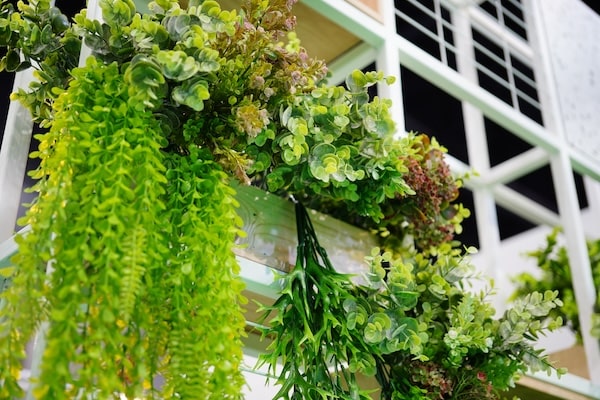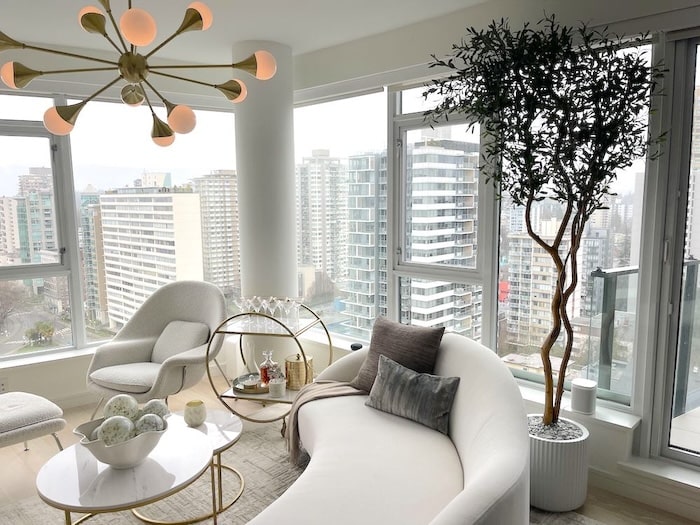Imagine life a few generations ago—laundry day meant hauling water, scrubbing clothes by hand, and air-drying everything on a line. The homes of that era were often decorated with stiff, plastic-looking silk plants that offered little in the way of realism or charm.
Thankfully, technology keeps evolving, and many of the things around us continue to get better and better. We used to drive in Model Ts without seatbelts; now we have electric cars. We used to get wrinkled fingers from wash basins; now we have load-sensing washing machines. And just like everything else, the silk plants of the past may have evolved as well, and now we have options that truly make artificial plants realistic and far more appealing.
Artificial plant materials have evolved: polyester, plastic, and latex. These new materials give modern artificial plants a host of advantages over their ‘fake plant’ predecessors.
There’s really only one place to find a silk plant still—that’s in a forgotten corner of your auntie’s house looking frayed and dusty. Silk trees. Silk plants. Silk flowers. That’s outdated technology. Ancient history!
Fake plants have been around so long that they are, in fact, ancient history. Almost since the birth of human civilization, we’ve tried to fill our daily lives with a sense of nature. But just like washboards and basins, artificial plant technology has come a long way, and now faux plants are better than ever!

Even in ancient Egypt, people seemed to love bringing more nature and greenery into their lives. Artisans crafted replicas of palm leaves and papyrus plants out of painted linen and other textiles. Tombs have been found decorated with faux plants, their leaves crafted from copper or silver.
Floral wreaths made from shaped and sanded horns were stained with various colours to imitate leaves. It’s believed these would decorate homes and be displayed at celebrations, often for religious or ceremonial purposes.
It’s believed that the idea for silk production can be traced back to Leizu, the wife of the Yellow Emperor. Legend tells us that as Leizu sat drinking her tea one afternoon, a cocoon fell into her cup and unravelled into a long, soft thread.
Over the next 1500 years, silk became an important part of ancient Chinese culture, including silk flowers. These delicate creations were a status symbol and were often displayed in the hair of noblewomen and featured in portraits.
In ancient Rome, artificial plants were used to beautify temples and homes. Roman artists mastered the art of creating imitation flowers. They achieved such a level of perfection with wax that we have only recently been able to match their quality with other modern materials.
For the Romans, these faux plants were not just for adornment; they also signified wealth and social status and were prominently featured in public festivals and private events.
The Victorian Era saw a surge in floral art, which aligned with the Victorians' love for opulent and busy decoration styles. It wasn’t unusual for every surface to bear some type of floral decoration.
During this time, artificial flowers were made from all sorts of materials: silk, velvet, satin, gauze, muslin, and cambric. The era's fascination with luxurious and elaborate designs fueled the evolution of these intricate artificial floral arrangements.
Today, silver-plated leaves might be too costly, and silk flowers might be too delicate, but we have some incredible choices when it comes to customizing our spaces with artificial plants. Whether you’re decorating with realistic artificial plants or opting for big, bold artificial trees that make a statement, these materials offer endless options to enhance your space.
The flexibility of modern materials allows for an extensive range of plant designs and sizes, making it easy to express your style and suit any decorative need. Virtually any plant or design can be created these days—from faux olive trees to green walls—offering more variety and complexity than ever before. This variety helps bring the natural beauty of the outdoors inside, all without the seasonal limitations of live plants.
Contemporary materials are far more durable. Silk plants would often become brittle and discoloured, while more modern polyester, plastic, and latex faux plants retain their attractive appearance. They’ll withstand wear and tear, resist fading, and maintain their shape over time, making them perfect for both indoor and outdoor use.
Today’s artificial plants look incredibly lifelike. The best fake plants have detailed textures and natural colours that make it hard to tell them apart from real plants. When designed well, realistic artificial plants can seamlessly complement your home décor, adding an organic feel without the effort real greenery demands. Whatever your specifications, it’s easy to add a touch of nature to any space without the upkeep.
Modern materials are easier to clean and maintain. Polyester, plastic, and latex plants can be wiped down with a damp cloth or rinsed without risk of damage. Unlike older silk plants, these materials are more resilient and don’t require as much careful or gentle handling.

Thankfully, technology has come a long way—we have electric washing machines to wash our clothes, and we have lifelike artificial plants to enliven our spaces. Whatever design choice you make, there are various faux plants, faux trees, and faux flowers you can use to bring your vision to life.
If you’re looking for the best fake plants to suit your space, Greenscape is here to bring you tailor-made solutions:
We can do it all. If you’re ready to elevate your indoor or outdoor space, contact us today!
2025 © Greenscape Design & Décor | Privacy Policy | Terms and Conditions